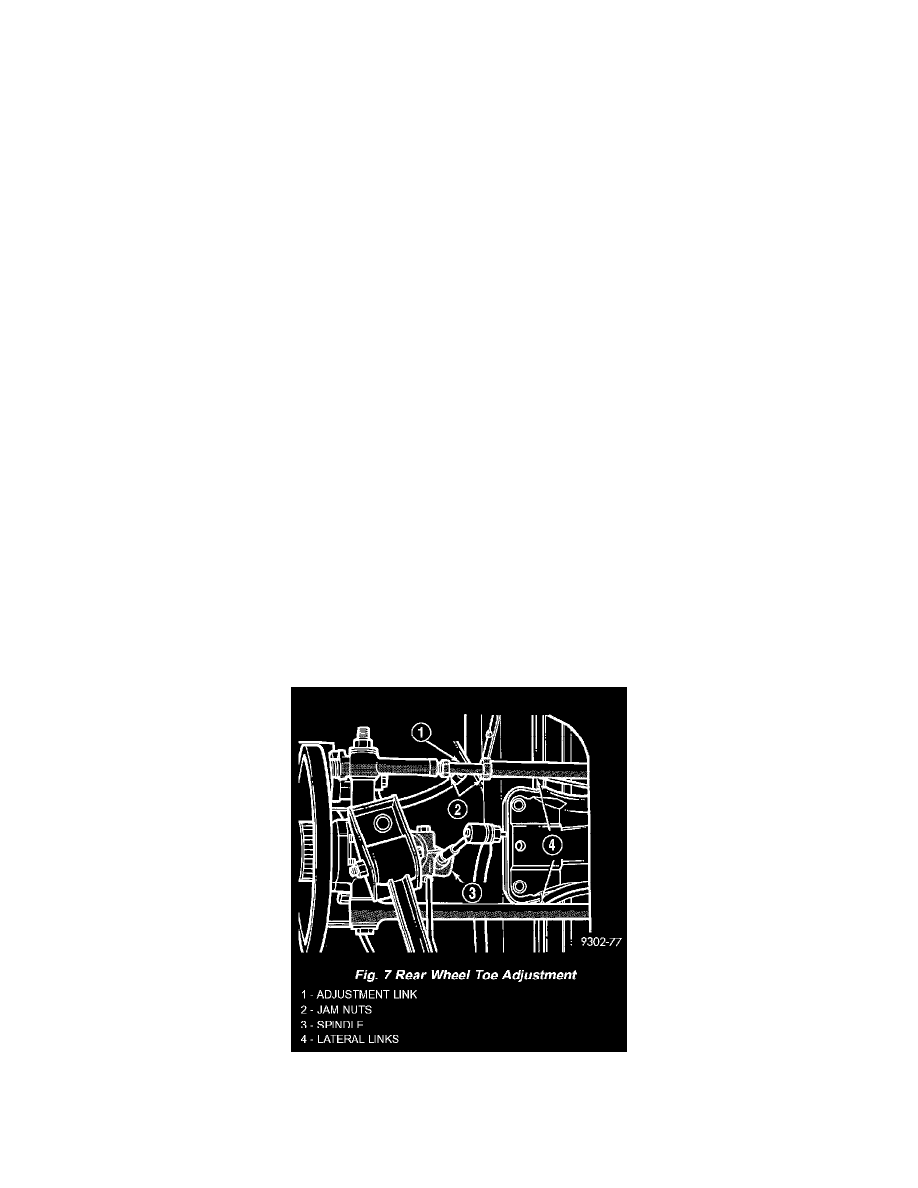Intrepid V6-2.7L VIN R (2003)

Alignment: Service and Repair
Wheel Alignment
Alignment
STANDARD PROCEDURE - WHEEL ALIGNMENT
PRE-WHEEL ALIGNMENT INSPECTION
Before any attempt is made to change or correct the wheel alignment, the following inspection and necessary corrections must be made to ensure
proper alignment.
1. Verify that the fuel tank is full of fuel. If the tank is not full, the reduction in weight will affect the curb height of the vehicle and the alignment
angles.
2. The passenger and luggage compartments of the vehicle should be free of any load that is not factory equipment.
3. Check the tires on the vehicle. All tires must be the same size and in good condition with approximately the same amount of tread wear. Inflate all
the tires to the recommended air pressure.
4. Check the front wheel and tire assemblies for excessive radial runout.
5. Inspect lower ball joints and all steering linkage for looseness, binding, wear or damage. Repair as necessary.
6. Check suspension fasteners for proper torque and retighten as necessary.
7. Inspect all suspension component rubber bushings for signs of wear or deterioration. Replace any faulty bushings or components before aligning
the vehicle.
8. Check the vehicle's curb height to verify it is within specifications. Refer to Curb Height Measurement.
WHEEL ALIGNMENT SETUP
1. Position the vehicle on an alignment rack.
2. Install all required alignment equipment on the vehicle, per the alignment equipment manufacturer's instructions. On this vehicle, a four-wheel
alignment is recommended.
NOTE: Prior to reading the vehicle's alignment readouts, the front and rear of vehicle should be jounced. Induce jounce (rear first, then front) by
grasping the center of the bumper and jouncing each end of vehicle an equal number of times. The bumper should always be released when vehicle
is at the bottom of the jounce cycle.
3. Read the vehicle's current front and rear alignment settings. Compare the vehicle's current alignment settings to the vehicle specifications for
camber, caster and toe-in. Refer to Specifications.
4. If the rear alignment is out of specification, adjust it first, before proceeding to the front. Rear camber and caster are not adjustable. If rear camber
is out of specification, check for damaged or bent rear suspension components.
REAR WHEEL TOE ADJUSTMENT
